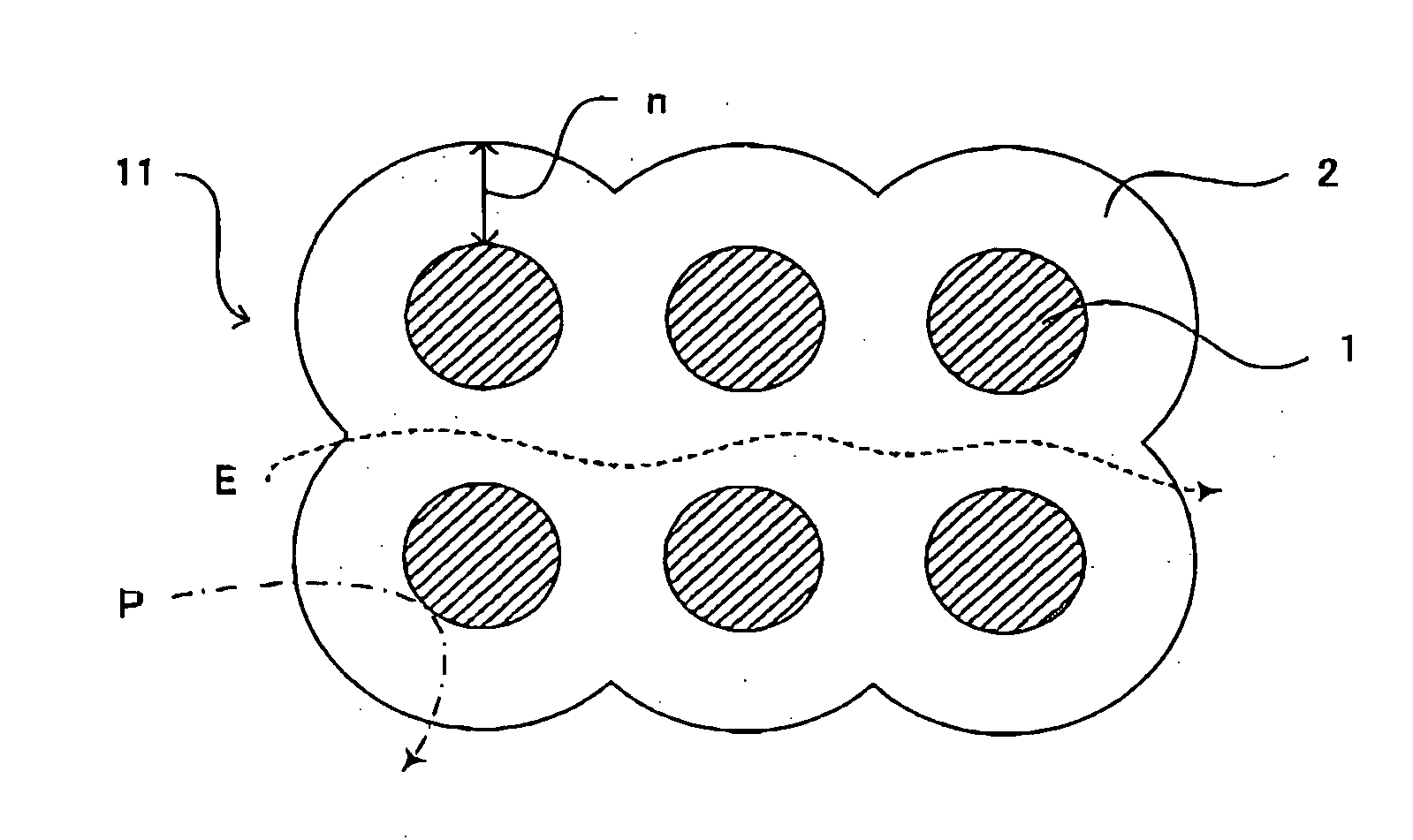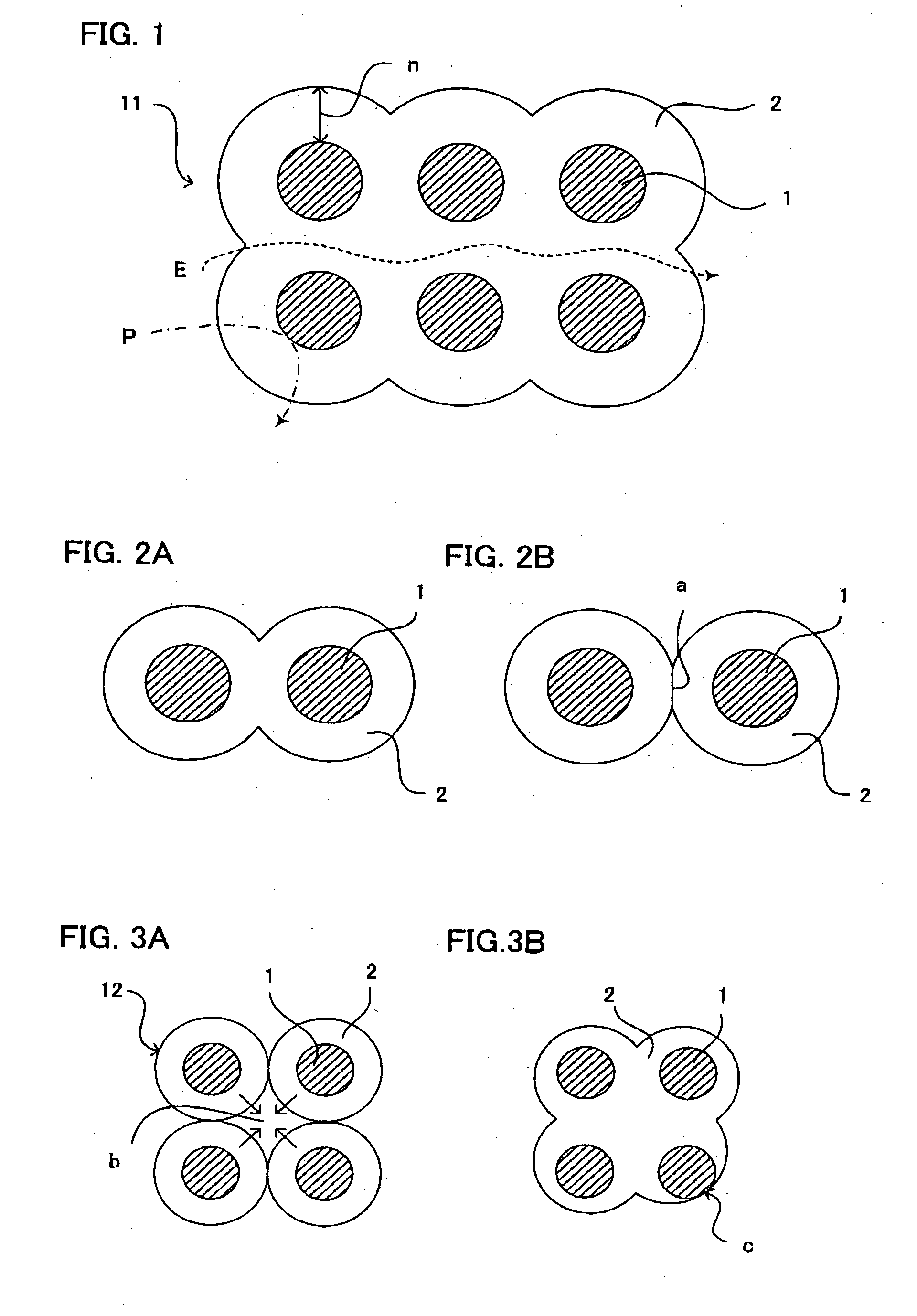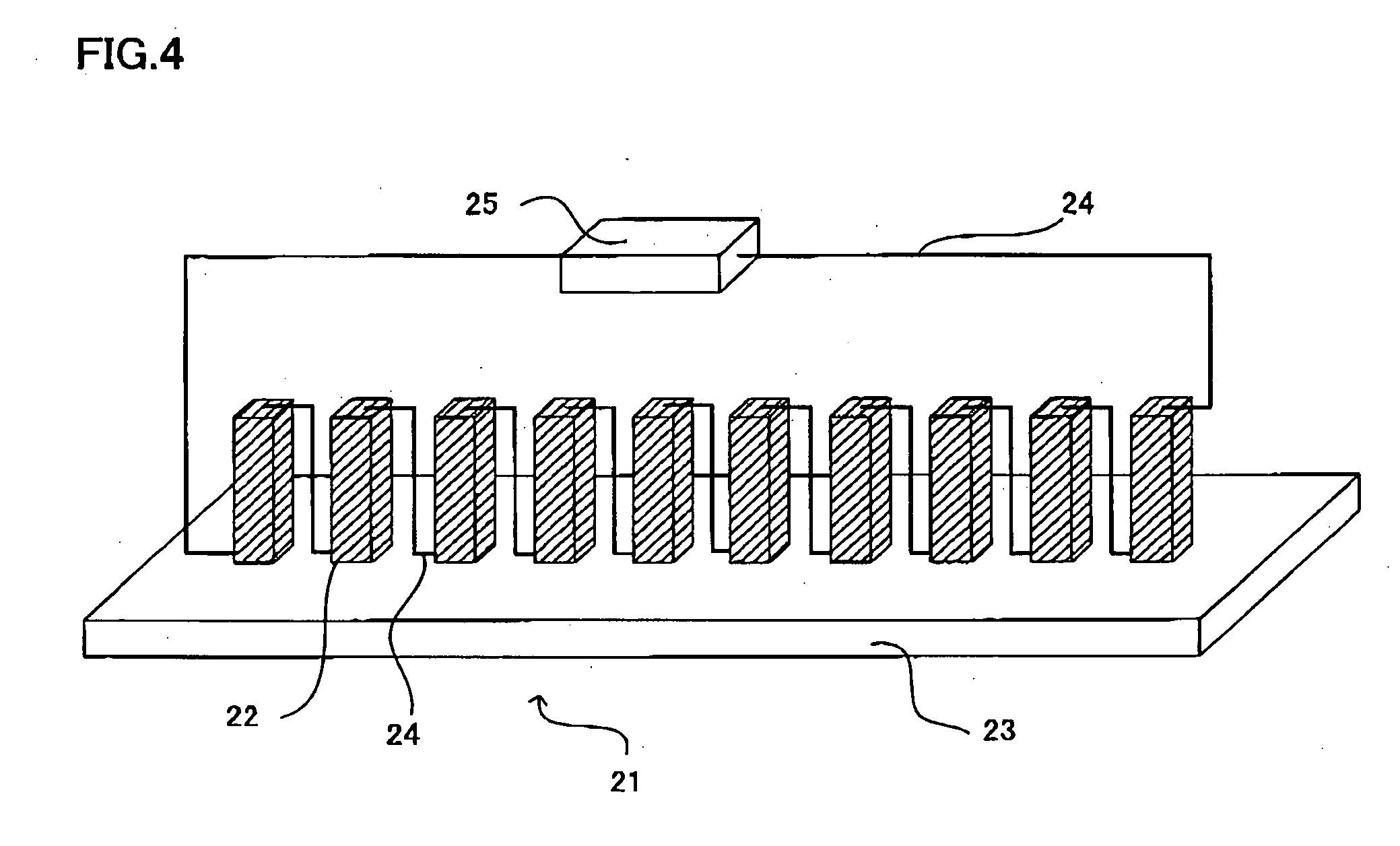Thermoelectric conversion materials
a technology of thermoelectric conversion materials and conversion materials, which is applied in the manufacture/treatment of thermoelectric devices, transportation and packaging, and thermoelectric devices. it can solve the problems of not being suitable for mass production, not being able to reduce precursors sufficiently to the inside, and requiring a lot of labor. achieve the effect of reducing thermal conductivity, and improving thermoelectric conversion performan
- Summary
- Abstract
- Description
- Claims
- Application Information
AI Technical Summary
Benefits of technology
Problems solved by technology
Method used
Image
Examples
example 1
(Formation of the Core Part Fine Particles)
[0093] According to the method disclosed in J. Am. Chem. Soc., 123, 11651-11654 (2001), Zno fine particles having a 3 nm particle size were synthesized. They were not obtained as the ZnO fine particles alone but as a mixture with a trioctyl phosphine oxide (TOPO).
(Covering of the Core Parts with the Shell Parts)
[0094] The reaction field of the hot soap method was provided by the below dispersing agent and organic solvent.
1,2-hexadecane diol (produced by ALDRICH)1.2g1-adamantanecarboxylic acid (produced by ACROS)0.76gHexadecyl amine (produced by KANTO KAGAKU.)12gDiphenyl ether (produced by KANTO KAGAKU.)6ml
[0095] The above-mentioned dispersing agent and organic solvent were mixed in a flask. 0.126 g of the above-mentioned mixture of the Zno fine particles and trioctyl phosphine oxide (TOPO) was added into the flask. After substituting the inside of the flask with an argon gas atmosphere, it was heated to 80° C.
[0096] Next, as a shell...
example 2
[0106] The reaction field of the hot soap method was provided by the below dispersing agent and organic solvent.
1,2-hexadecane diol (produced by ALDRICH)1.2g1-adamantanecarboxylic acid (produced by ACROS)0.76gHexadecyl amine (produced by KANTO KAGAKU.)12gDiphenyl ether (produced by KANTO KAGAKU.)6ml
[0107] The above-mentioned dispersing agent and organic solvent were mixed in a flask and heated to 220° C. after the substitution by an argon gas atmosphere. Next, a solution prepared by dissolving 0.025 g of a rhodium acetyl acetonate (produced by ALDRICH) as the core part precursor in 1.0 g of a dichlorobenzene (produced by KANTO KAGAKU) was injected into the above-mentioned flask at one time. After the injection, it was maintained at 220° C. for 20 minutes. Thereafter, the reaction liquid was cooled down with air to 0° C. Apart of the reaction liquid was collected, and the remainder was used for the shell formation.
[0108] After cooling down the reaction liquid after the partial col...
PUM
| Property | Measurement | Unit |
|---|---|---|
| particle size | aaaaa | aaaaa |
| size | aaaaa | aaaaa |
| size | aaaaa | aaaaa |
Abstract
Description
Claims
Application Information
 Login to View More
Login to View More - R&D
- Intellectual Property
- Life Sciences
- Materials
- Tech Scout
- Unparalleled Data Quality
- Higher Quality Content
- 60% Fewer Hallucinations
Browse by: Latest US Patents, China's latest patents, Technical Efficacy Thesaurus, Application Domain, Technology Topic, Popular Technical Reports.
© 2025 PatSnap. All rights reserved.Legal|Privacy policy|Modern Slavery Act Transparency Statement|Sitemap|About US| Contact US: help@patsnap.com



